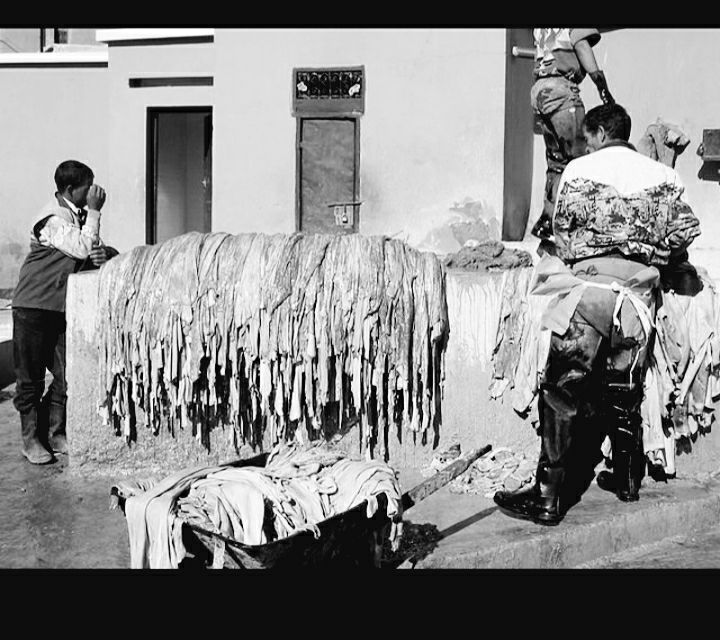The strikes that we will talk about, are not the only strikes that the workers of Iraq did. Our history is full of strikes, some continued for several days and succeeded in achieving their demands. But we seek here to introduce a number of strikes that took place at different times and in very different political and economic conditions, through them we can observe the developments that occurred in the structure of the working class in Iraq in sync with the development of the economic and industrial sectors, railways, ports, oil, spinning and weaving and others Lots of sectors. Those developments that helped to increase the confidence of the working class and its ability to be an effective social class that can defend its rights.
The authorities didn’t hesitate to use armed violence, mass killings and shooting at workers in order to end their strikes, as well as their efforts to revive tribal values and customs to pressure the workers and their leaders , threaten them with getting fired from this or that clan, if they didn’t abandon the strikes or announce their withdrawal from it.
In many of these strikes, the ability of workers to organize themselves, without a union, or a political party was shown, in order to confront the authority or companies and employers, to demand their rights of increasing wages, the right to unionize, a labor law that protects workers , limits working hours, the right to health care , guarantee in case of work injuries and many other demands.
Some these strikes are:
The strike of the dam workers in the “Muntafiq Brigade”, 1876
What the press published in Istanbul, the capital of the Ottoman Empire, recorded in 1876, about the strike of dam workers in the “Muntafiq Brigade, Nasiriyah today”, that is the first labor strike, documented in the press that was issued at that time, which told about the facts that the strike carried out by workers In the areas subject to the dominance and authority of the Ottoman Empire, where economic and industrial backwardness , the absence of any modern features in economic structures and institutions, factories and industrial workshops, was spread. Despite what “Midhat Pasha” had done, in 1869, to develope the economy and industry in Iraq after importing equipment and machines , the expansion of the “Abkhana” weaving factory founded by “Namik Pasha” in Baghdad, the establishment of Baghdad tramway, and a modern printing press operated by steam, and the interest in weapons repair shops…etc. The strike happened as a result of the keen pressure that the dam workers were subjected to, such as non-payment of wages and working long hours “from sunrise to sunset”. However, the governor of “Nasiriyah”, “Nasser al-Saadoun”, who was originally a clan sheikh, managed to force them to return to work under the threat of arms and tribal sheikhs.
Adhamiya leather makers(tanners craft) strike 1912
After years of Al-Muntafiq Brigade dam workers strike, Baghdad witnessed the first labor strike, which was reported by the press. Al-Adhamiya tanners craft announced a strike, in the late fall of 1912, due to low wages and that they wouldn’t return to their work until their demands achieved. They did this after negotiations with the head of the tanners craft, “Sheikh Abdul Razzaq Chalabi”, who convinced them to end the strike and return to work after achieving their demand of increasing daily wages. Al-Adhamiya tanners craft was not satisfied with what was achieved, so they declared the strike again in early Dec. 1913, when the first labor leadership emerged to manage the strike and direct the workers to their demands and what they should do in front of the pressures they are exposed to. “Abd al-Hadi al-Azami” was the leader of that workers’ strike which is about a 25% increase in wages.
The aim of remembering the strikes of Iraq’s workers is to push towards re-reading the history of its struggles and its true ability to organize and achieve their rights, also the possibility of turning into an influential social and class force, confronting the aim of erase it from existence and underestimating its role in Iraq today.

 Nominating a new parliament speaker without any immediate solutions since last year, 2023.
Nominating a new parliament speaker without any immediate solutions since last year, 2023. On the memory of the genocide that the marshes were subjected to, who are the Ahwarians?
On the memory of the genocide that the marshes were subjected to, who are the Ahwarians? Muqtada al-Sadr’s militia attack the Green Zone in Baghdad
Muqtada al-Sadr’s militia attack the Green Zone in Baghdad The environmental activist Jassim al-Asadi, who seeks to protect the marshes in Iraq, has been kidnapped on 1/2/2023.wed
The environmental activist Jassim al-Asadi, who seeks to protect the marshes in Iraq, has been kidnapped on 1/2/2023.wed Working women in Iraq – the way to work is not safe
Working women in Iraq – the way to work is not safe Urgent: Total chaos inside Iraq, imposing a curfew, general closure of all government institutions, in addition to leaving most of the embassies of foreign countries in Baghdad.
Urgent: Total chaos inside Iraq, imposing a curfew, general closure of all government institutions, in addition to leaving most of the embassies of foreign countries in Baghdad.














